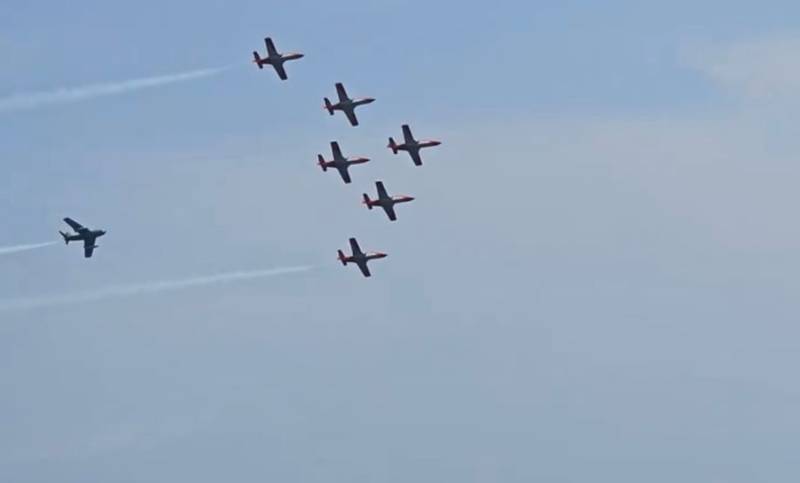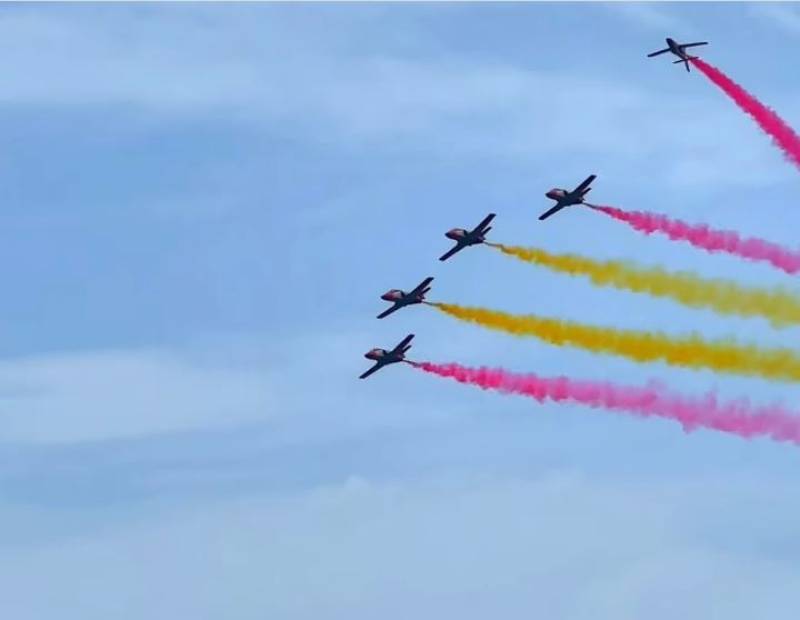Date Published: 16/06/2025
In pictures: Thousands flock to San Javier's legendary International Air Festival
ARCHIVED ARTICLE -
Some of the best pilots in the world put on a spectacular display of aerial acrobatics in San Javier
The Mar Menor's waters reflected a kaleidoscope of aircraft over the weekend as the
San Javier International Air Festival transformed the Costa Cálida into Spain's aviation capital. More than 30 aircraft from six nations painted the Mediterranean sky in what Spanish Air Force and Space Force officials called "an unprecedented air display in the history of Spanish aviation."
King Felipe VI witnessed the aerial extravaganza from the officers' club, joined by Defence Minister Margarita Robles and senior military officials. The VIP viewing area also hosted regional president Fernando López Miras alongside Madrid's president Isabel Díaz Ayuso and San Javier mayor José Miguel Luengo.
Below on the beaches, thousands of spectators created their own spectacular scene. From dawn, visitors streamed toward the coast "like a great flood," quickly filling parking areas and transforming the sand into a sea of umbrellas, coolers and raised smartphones capturing every aerial manoeuvre.
On Sunday June 15, the festival opened with the graceful descent of the Parachute Acrobatic Patrol (Papea), setting the stage for a journey through Spanish aviation history. The demonstration began with practical displays - a firefighting aircraft showing how it draws water directly from the Mar Menor before releasing it over simulated fire zones.
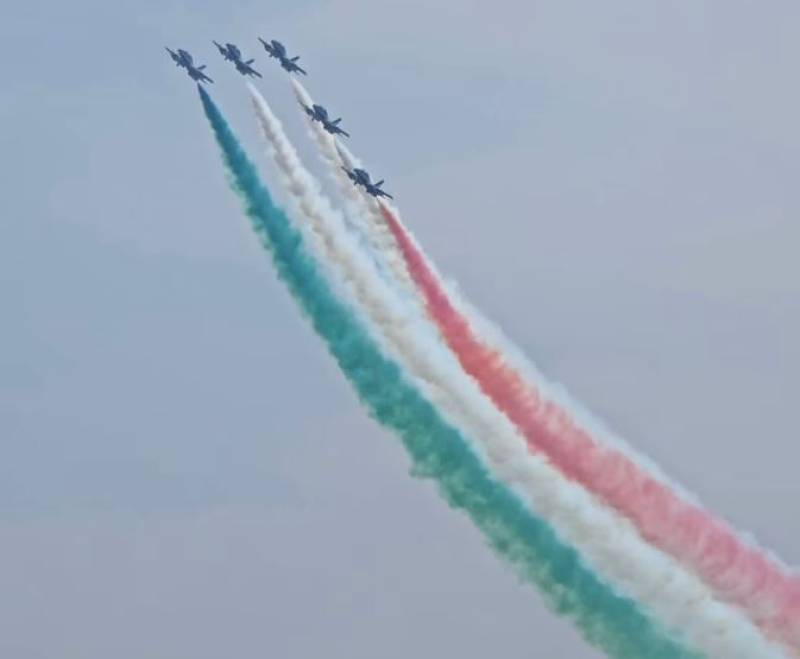
The crowd's first applause erupted for the CH-47 Chinook helicopter, showcasing its remarkable ability to land on water and take off again, followed by the historic Northrop F-5, still serving as an advanced trainer decades after its introduction.
Perhaps the most elegant moment came with the parade of three classic trainers: the Bücker, T-6 Texan and Mentor. These aircraft, with their decades of pilot-training heritage, transported viewers back to aviation's golden age. The Spanish-designed Saeta jet from the 1950s provided a perfect bridge between eras.
Fast-forwarding to the 1980s, the F-18 Hornet demonstrated why it remains central to Spanish defence capabilities.
The Patrouille Suisse brought Alpine precision to the Mediterranean, their red and white F-5E Tiger II supersonic fighters creating stunning reflections on the salt lake below. Known for high-altitude mountain displays, the Swiss team adapted their expertise beautifully to the coastal setting, with one pilot offering congratulations in fluent Spanish to their Spanish counterparts.
The festival's technological pinnacle arrived with the Eurofighter Typhoon, NATO's aerial guardian. The bat-winged fighter shattered the sound barrier, its thunderous roar echoing across the Mar Menor as spectators felt the raw power of modern combat aviation.
Italy's famous Frecce Tricolori provided perhaps the most visually striking display, their 10 Aermacchi MB-339 aircraft painting the Italian tricolour across the sky in a series of daring manoeuvres that left the crowd mesmerised.
The festival also marked a significant transition in Spanish aviation. The new Pilatus aircraft made its artistic debut, showcasing barrel rolls and inverted flights as it prepares to replace the iconic C-101 in Spain's aerobatic formations.
But the day's most poignant moment belonged to the
Patrulla Águila’s final performance. After 40 years of representing Spanish aviation excellence worldwide, the legendary formation was a fitting end to an exciting weekend. Captain Luis Verjano's emotional commentary accompanied the C-101s through their signature manoeuvres - rolls, mirror flights, corkscrews and heart formations - as more than a century of Patrulla Águila veterans flew in spirit alongside the seven current pilots.
The festival drew to a close at around 5pm, leaving thousands of spectators with memories of a truly historic day when the Mar Menor hosted what many are calling the finest air display in Spanish aviation history.
Images: Ezio Cairoli
article_detail

|



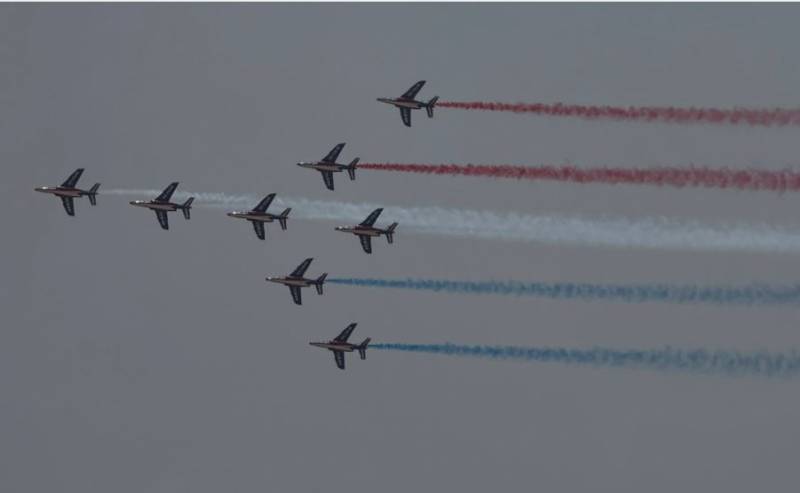
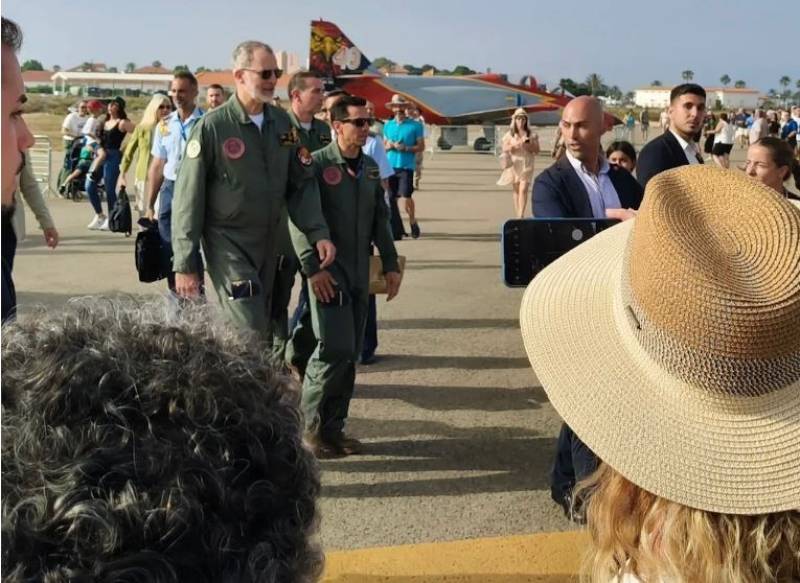
 The crowd's first applause erupted for the CH-47 Chinook helicopter, showcasing its remarkable ability to land on water and take off again, followed by the historic Northrop F-5, still serving as an advanced trainer decades after its introduction.
The crowd's first applause erupted for the CH-47 Chinook helicopter, showcasing its remarkable ability to land on water and take off again, followed by the historic Northrop F-5, still serving as an advanced trainer decades after its introduction.